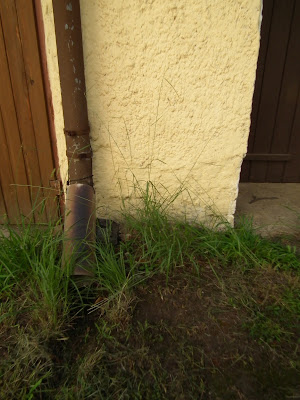Ubatuba-tól Vagafogo-ig - Egy IAVS szimpózium Brazíliában
2016. június 12-16 között rendezték meg az
International Association of Vegetation Science éves szimpóziumát (idén az 59.) ebben az évben Dél-Amerikában. A konferencia témammegjelölése: Conservation of Plant Communities: From Environmental Drivers to Ecosystem Services mutatja az utóbbi években a vegetációtudományban is látható hangsúly eltolódást a tisztán elméleti vegetációtudományos kutatások irányából a gyakorlatorientált konzervációs és restaurációs beavatkozásokat alátámasztó vagy éppen ezek okán végzett vizsgálatok és megközelítés irányába.
A konferencia résztvevői
A Pirenópolisban, Brazíliában rendezett konferencián kutatócsoportunk 2 előadással vett részt, melyek az alábbiak voltak:
Török P., Valkó O., Deák B., Kelemen A., Tóth E., Tóthmérész B.: Traditional cattle and sheep grazing in short-grass steppes: is the livestock type more crucial than grazing intensity?
In agriculture-driven landscapes, grasslands have an outstanding importance in maintaining species richness. Restoration and conservation of grassland biodiversity, therefore, became a top priority both in research and practice. In many regions sheep or cattle grazing are vital options for biodiversity conservation. In our study we compared the effects of cattle and sheep grazing on short-grass steppe vegetation under various grazing intensities. We tested the following hypotheses: A) Sheep grazing maintains a lower taxonomic and functional diversity, lower amount of forbs compared to cattle grazing. B) The effects of grazing are highly intensity-dependent and differences between cattle and sheep grazing are more pronounced at low grazing intensities than at high ones, because the selectivity of grazing decreases at higher intensities. We found lower taxonomic- and functional diversity, and lower cover of forbs in sheep grazed steppes compared to cattle grazed ones. Grazing intensity had a significant effect only on species richness. The livestock type had a significant effect on Shannon diversity and evenness. While most single trait indices were affected by the livestock type, significant effect of intensity was detected only in a few cases. Our findings clearly indicated that most of the vegetation characteristics were significantly affected by livestock type, while fewer intensity-dependent effects were confirmed. These findings suggest that the selection of the livestock type is more crucial in biodiversity conservation and management than the adjustment of grazing intensity. Our results also suggest that cattle grazing creates a more species- and trait-rich vegetation with higher cover of forbs compared to sheep grazing. However, sheep grazing is a much better choice to suppress forbs, including weedy ones, than cattle grazing. For optimal ecosystem functioning and for highest variability of traits proper grazing intensity should be also carefully set and fine-tuned in respect of the habitat type and the grazing animal.
Tóthmérész B., Deák B., Török P., Kelemen A., Miglécz T., Tóth K., Valkó O.: Successful recovery of species rich grasslands on croplands - case studies from Central Europe
Grasslands are vital landscape elements, and sustaining their biodiversity is crucial for biodiversity conservation, especially in agricultural landscapes. In Central Europe the large-scale abandonment of croplands resulted in landscape-scale changes in biodiversity, ecosystem services and agricultural production. Grassland restoration on former croplands offers a vital opportunity to mitigate the loss of grassland biodiversity. We studied vegetation changes in 24 former croplands sown by low-diversity seed mixtures in East-Hungary. Our first aim was to evaluate the usefulness of sowing lowdiversity seed mixtures, which is a frequently used restoration technique because of its high predictability and fast results. Our second aim was to test a novel approach by the establishment of colonisation windows for increasing the diversity of species-poor sown grasslands, restored by the use of low-diversity seed mixtures. We compiled a highdiversity seed mixture containing 35 species. We established altogether 32 colonisation windows (1×1-m, 2×2-m and 4×4-m size) in eight 8-year-old grasslands restored by low-diversity seed sowing. Our third aim was to compare the success and costeffectiveness of spontaneous grassland recovery with an active grassland restoration by seed sowing in terms of the restoration of ecosystem services, like weed control, biomass production, and recovery of biodiversity. Our results showed that using low diversity seed mixtures grassland restoration on croplands offer a viable solution for restoring biodiversity and ecosystem services. By establishing colonisation windows we overcome the microsite- and propagule limitation and we can successfully introduce target species to the species-poor recovered grasslands. All sown species established in the colonisation windows and many of them maintained or even increased their first year cover to the second year. Larger colonisation windows were characterised by higher cover of sown species and more homogeneous species composition compared to the smaller ones. Thus, in restoration practice larger colonisation windows are recommended. Seed sowing ensures higher weed control and biomass production, but lower biodiversity compared to spontaneous recovery. We found that both spontaneous grassland recovery and seed sowing can be cost-effective methods, and can be successful even in a relatively short period of a nature conservation project.
A konferencia honlapja
ITT.
A konferencia programja elérhető
ITT.
Az összefoglalók megtalálhatóak
ITT.
A konferencia szakmai programjához szorosan kapcsolódó terepi szimpóziumokon is részt vettünk ahol gyakran oldott hangulatban kerülhetett sor fontos szakmai megbeszélésekre és vitákra. Az alábbiakban néhány fotót mutatnék be ennek illusztrálására.
Good morning Sunshine (A magyar csapat, Milan Chytry fotója - a kép közepe azért éles :-))
Pirenópolis látképe
Az "igazi" cerrado vegetáció
A "száraz" mangrove
És egy kicsit még közelebbről
A restinga (Atlanti esőerdő régió)
Restinga 2
Restinga aljnövényzete - Piperaceae :-)
Szobanövények, tisztára mint a nappalinkban :-) (1)
Szobanövények, tisztára mint a nappalinkban :-) (2)
Szobanövények, tisztára mint a nappalinkban :-) (3)
Csücsörésző kolibri (igen, rengeteg fény volt :-))
Aztán kiderült hogy van a közelben egy maddárszentély is...
Nem volt egyszerű fotózni a jószágokat...
Általában nem sikerült :-)
Ezeket könnyebb volt :-)
A köderdők
Araukária mag eladó
Restinga vegetáció egy másik helyen
Voltunk persze ilyen helyen is...
És végezetül szívfájdításképpen - a konferencia ilyen helyen volt




























